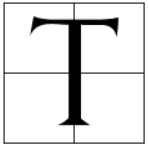HISTORY
Ancient Baghdad: The Round City
A city designed like no other
 The capital of Iraq, Baghdad is a city one often associates with violence and brutality in light of recent events. But while Iraq was founded in 1958, the Abbasid Dynasty had established Baghdad as an architectural marvel about 1200 years prior. The concrete jungle that one sees today is a far cry from the impeccably designed settlement it used to be. Few cities can lay claim to construction that rivaled the very best of its time. And none can contest for the title of Round City. Meticulous planning guaranteed that this unconventional endeavor paid off.
The capital of Iraq, Baghdad is a city one often associates with violence and brutality in light of recent events. But while Iraq was founded in 1958, the Abbasid Dynasty had established Baghdad as an architectural marvel about 1200 years prior. The concrete jungle that one sees today is a far cry from the impeccably designed settlement it used to be. Few cities can lay claim to construction that rivaled the very best of its time. And none can contest for the title of Round City. Meticulous planning guaranteed that this unconventional endeavor paid off.
In 762 AD, al-Mansur, the second Abbasid caliph decided that the Abbasid Caliphate needed a new capital. He was heavily involved in every facet of the project, from site selection to construction. The caliph sailed across the Tigris River in search of the right spot. He chose a position that could take advantage of both the Tigris and the Euphrates rivers, granting Baghdad fertile farmland and an endless supply of water. The caliph painstakingly designed the city himself, with some assistance from elite designers. He supervised workers who traced the plans of his rotund city on the ground in lines of cinders. Historians reckon that the project cost over 18 million gold dinars and as many as 100,000 surveyors, architects, engineers, and laborers were employed to bring this dream to fruition. Four years.
Four years to craft a timeless legacy
We know not whether the round design was a result of Central Asian ideas on urban planning (particularly those of the Sasanian Empire) or the writings of Euclid, the fabled Greek father of geometry. A round wall of kiln-fired bricks took fewer resources to build and was easier to defend from invaders. Fortified double outer walls 44 meters thick were surrounded by a deep moat, making the impregnable Round City a settlement of three concentric circles.
162,000 bricks for the first third of its height, 150,000 for the second third, and 140,000 for the final third.
Greater than the sum of its parts
Few cities were endowed with such merit and splendor. Religious scholars, pioneering astronomers, witty poets and other artisans of all crafts flocked to the Round City. The House of Wisdom was born, a library of learning that respected all faiths and seekers of knowledge. Commonly known as the City of Peace, Baghdad was divided into four quarters by straight roads that ran through the city’s heart to the four gates in the outer walls. Each of these equidistant gates pointed to a different city — Basra, Kufa, Khurasan, and Damascus.
Both the Kufa and Basra gates opened onto the Sarat canal — a network of waterways that connected the Euphrates and the Tigris rivers. Numerous bridges of skiffs roped together stood across these water bodies, a picturesque sight lost to the ravages of time. A part of the Silk Road, the breathtaking city soon became a hub for economic, cultural, political, and religious interactions between the East and the West.
The center held the Great Mosque and the Golden Gate Palace, the caliph’s residence. A symbol of Islamic authority, the palace’s green dome was visible for miles around, surmounted by a massive figure of a horseman, lance at the ready. Only a privileged few were let inside the innermost circle of Baghdad. At the edges of the first circle were palaces for those of royal blood and homes for their servants. It also hosted the caliph’s massive kitchens, barracks for the cavalry guard, and other offices that deal with matters of state. A wall split this section and the living quarters occupied by most of Baghdad’s residents.
While it was earlier intended to hold administrative complexes, the shifting sands of the ground reality meant that the caliph’s vision had to be altered for the greater good. The four straight roads that cut through Baghdad like arteries were lined with merchants’ shops and bazaars that were sure to entice the eyes of travelers and bystanders. Smaller streets unfurled off these four roads like Persian carpets to squares and houses. Speaking of which, Persian architecture flourished among these buildings, birthing innovative tessellating shapes and designs that look futuristic to this day.
Soon, the walls proved to be an inhibition to the growth of the sprawling city, forcing the City of Peace to expand beyond its four miles of brick walls. Around the southern gates, a new district popped up. The road leading out of the Khurasan gate soon grew three suburbs of its own, one which eventually rivaled Baghdad itself in scope and grandeur. In its prime, the Round city hosted between 1.2 to 2 million inhabitants.
The modern hospital originated here, with a sophisticated medical system in place that treated patients at no cost. Scribes were learning from their European counterparts and cataloging their discoveries on paper during the 8th century, an invention that took two more centuries to reach Europe. The tales of the bewitching One Thousand and One Nights found its roots in this enchanting city. Baghdad ushered in an age of prosperity and progress, often called the Golden Age of Islam by historians. But it did not last.
Epilogue
The gilded glory of Baghdad slowly began to decline. Warring nomads and crop failures delivered twin strikes that whittled down an economy that had flourished for centuries. A civil war destroyed a good chunk of the city. To add insult to injury, the Round City was ravished by the Buyid dynasty and the Turks in quick succession, leaving the Round city in ruins during the 10th and 11th century respectively. Alas, Mongol mercenaries (led by Genghis Khan’s grandson, no less) laid waste to what little remained of the city’s structures in the year 1258. The Tigris was said to run black with the ink of the countless manuscripts tossed into its depths. And with it went Baghdad’s bright prospects for the future.
It is with a heavy heart that I say that little to nothing remains of Baghdad’s glorious past. Midhat Pasha demolished most of the Round City when he took control of Baghdad as its Ottoman governor in the early 1870s. While he didn’t bother with preserving historical works, his reforms recast the face of the city that was once the center of the world. From schools to hospitals, granaries, and a water supply system, Midhat Pasha revamped the entire city’s interwoven systems. Those three years were perhaps the most cataclysmic in Baghdad’s modern history.
The inner sanctum of al-Mansur’s enduring city, once exclusive to royalty, was once again the abode of a few under the rule of Saddam Hussein. It soon became the headquarters of a force that devised machinations to control and devour the country. Before America’s occupation in 2003, it earned the name Green Zone, six square miles hostile to even Iraqis. While it is open to all once more, history forgets neither its victors nor its oppressors.
The Round City of Baghdad was a crowning triumph, a testament to the immense power and skill vested in the Abbasid Caliphate and his quest for the perfect city. A relic of which only a few structures remain.
